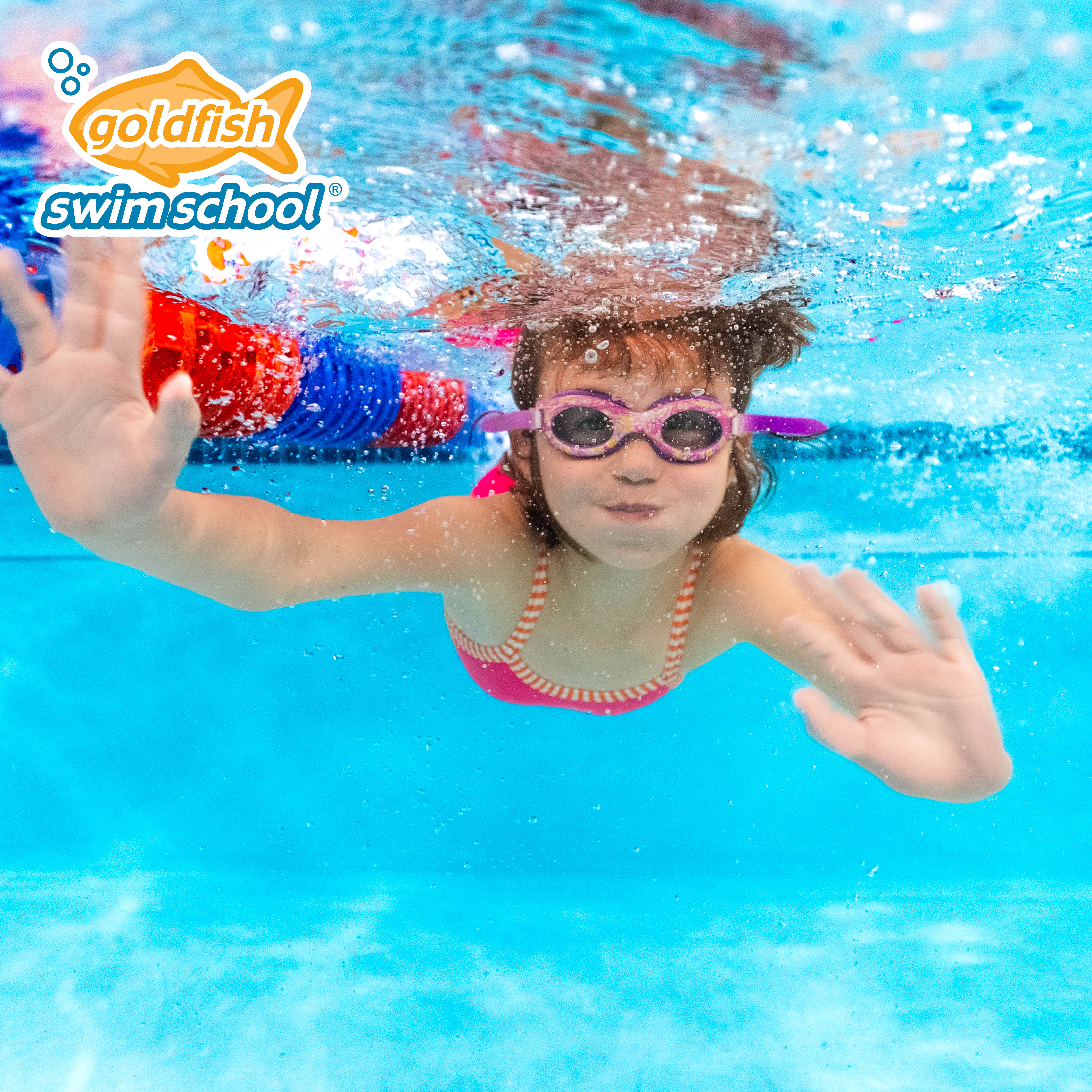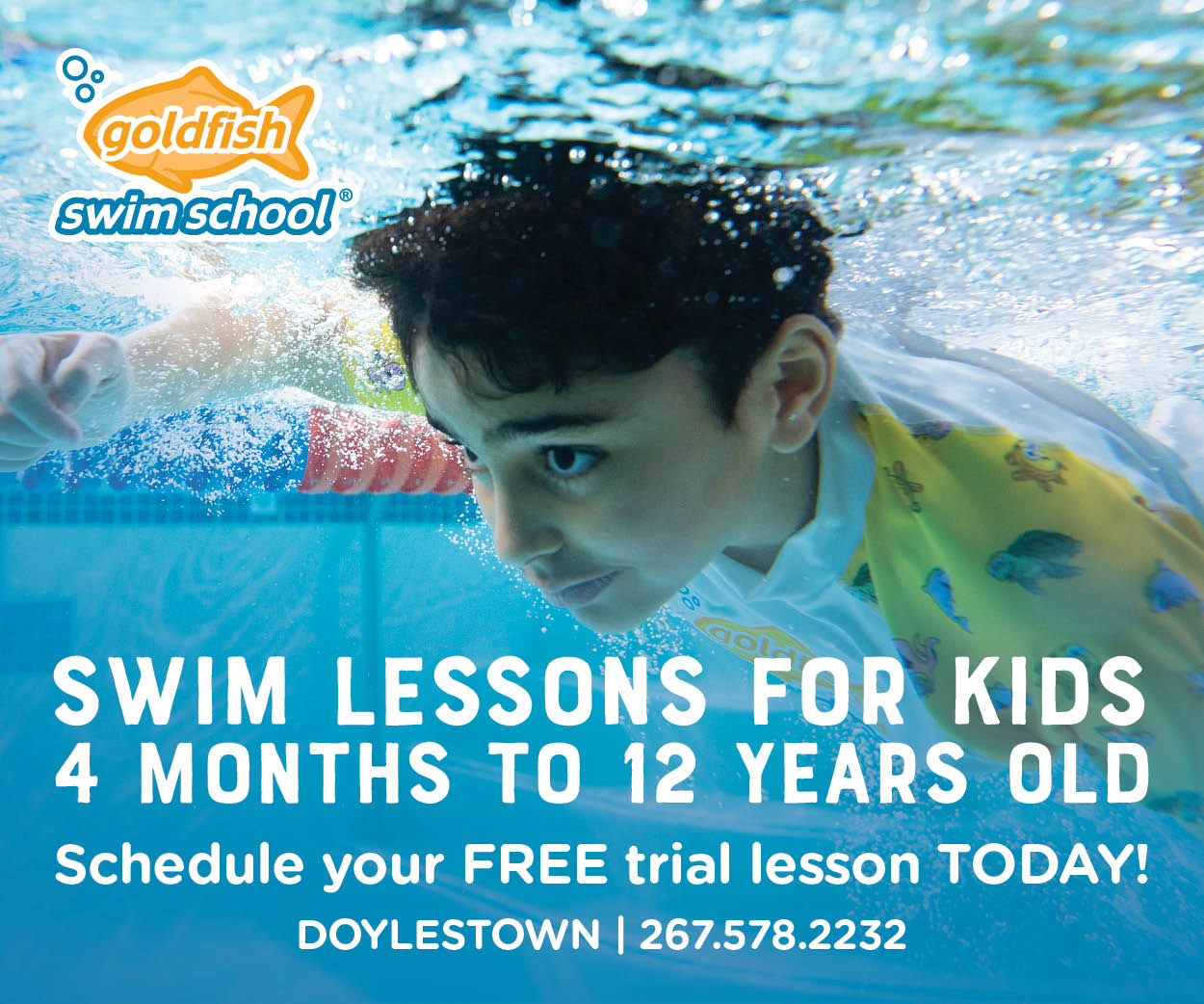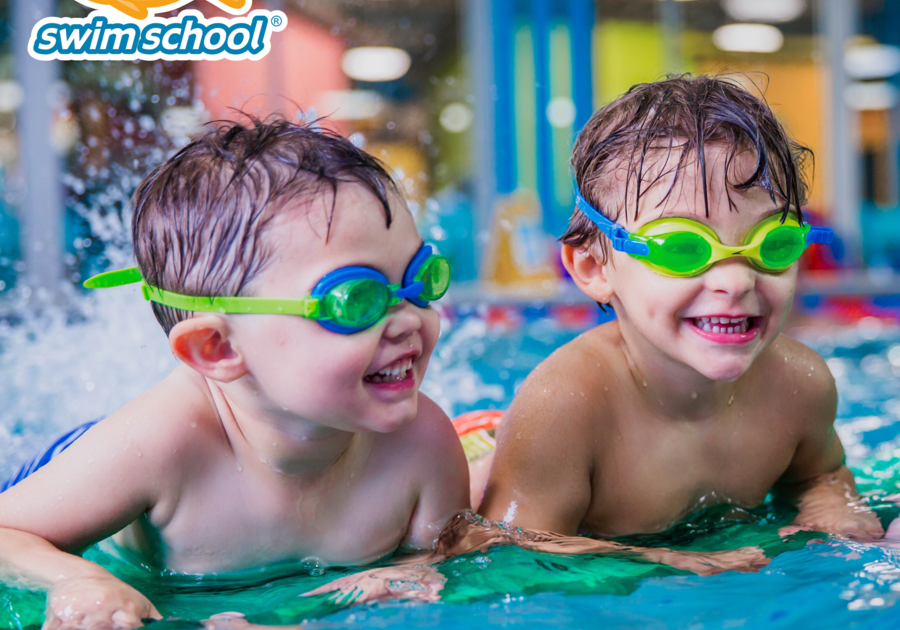Goldfish Swim School’s core focus is to teach children how to swim, and how to be safe in and around the water by providing them with encouragement, support, and water safety skills & knowledge. At Goldfish, located in Doylestown, they want kids - and their parents - to always feel comfortable in the water. By repeating water safety skills every week and drawing extra attention to water safety during this time of year, they are making sure kids know instinctively what to do in potential scenarios.
That’s what they’re doing at Goldfish Swim School every single day with The Science of SwimPlay®! They’re helping kids develop lifelong skills that allow them to grow and dive into new experiences in a safe environment - all while playing, which is the best way for them to learn.
 |
Unfortunately, the statistics are frightening. Drowning is the leading cause of injury death to children ages 1 to 4 and the second leading cause of injury death for children ages 1 to 14. A child can drown in as little as 1 inch of water, in as little time as 20 seconds. Providing swim lessons for your children and water safety education are truly life-saving skills.
 |
This summer, families are planning vacations to the ocean, lakes and pools - even water parks - and it is important families remind their children about water safety. Keep these water safety tips top-of-mind to help to keep your family safe this summer:
- Talk to your kids about water safety and establish family rules and expectations.
- Whether it’s bath time, pool time or beach time, silence your phone so you won't be distracted. Designate a water guardian whose job it is to watch the kids any time they're in, or around, water. It is easy to become distracted, especially when there are a lot of adults at the pool – Goldfish Swim School recommends appointing a guardian and taking turns having your eyes 100% focused on swimmers in the pool or ocean.
- Be aware of drowning hazards at home, like bathtubs, water buckets and toilets.
- Drain plastic or inflatable kiddie pools when they're not in use.
- Don't store toys in the pool area, as children might be tempted to reach for a toy in the pool and accidentally fall in.
- Put a four-sided fence around backyard pools & install pool alarms.
- Watch kids when they are in or around water. Keep young children within arm’s reach of an adult.
- Know that floaties, noodles and plastic inner tubes do NOT protect against drowning. They are created as water toys, not life-saving devices. Remember that lifejackets and other floatation devices do not replace the involvement of a parent. Lifejackets can be essential water-safety tools when used in addition to adult supervision, but be sure to check that they are Coast Guard approved.
- Get CPR certified. Hopefully you'll never need to use this life-saving skill, but at least you'll be ready if you do.
- Enroll your child in formal swim lessons so they can learn essential life-saving skills. Learn more about what Goldfish Swim School has to offer at www.goldfishswimschool.com/doylestown. If you have a busy schedule, they even offer one week summer swim clinics that allow more flexible options for travel and camp schedules, and family swim times.
 |



